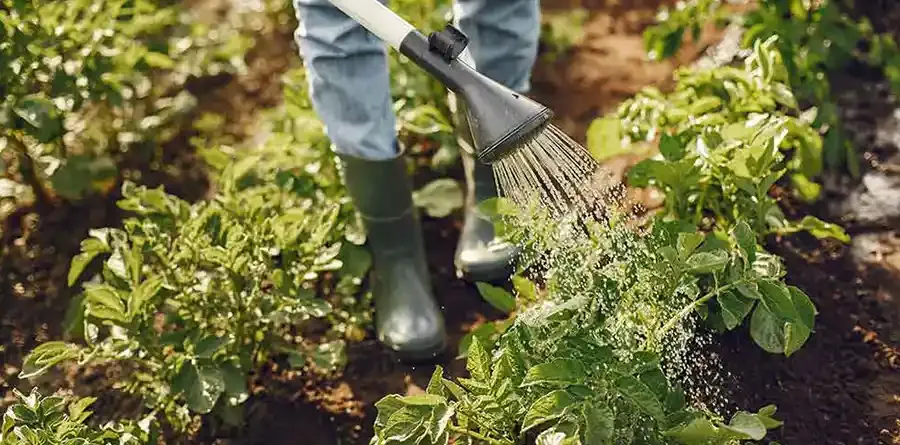Hyundai Motorstudio Senayan Park
Hyundai Motorstudio Senayan Park
Newsroom
The official news from Hyundai Motorstudio Senayan Park and a collection of innovative articles on mobility and sustainability here.
-
Chemical Content on Garden Soil Has Benefit, Learn Why!
- Hyundai Motorstudio Senayan Park Senayan Park 2022.06.06
-
Quality garden soil will promote a healthy root system, resulting in denser leaves. It will make the garden more productive and more fruit to come.Plants will benefit from garden soil that is rich in nutrients and minerals. Understanding the soil content of the garden is important to maximize the result, so the garden is healthier and suitable for planting.
The Importance of Garden Soil
What must be understood, garden soil is not only what it looks like. Soil is part of an ecosystem which consists of minerals, organic matter, oxygen, water, and other living organisms.
Soil is also a place for worms, nematodes, larvae, fungi, and various bacteria. All of these elements are dynamically mixed into an ecosystem. Without complex life in healthy soil, the world's ecosystems cannot survive.
Healthy soil is needed to grow healthy plants, and without healthy plants life cannot exist.Because of its importance, 95% of the global food supply is produced from the soil according to the UK government, although the portion has decreased due to the rise of hydroponic systems. The decline is also due to climate change, population growth, waste, pollution, and lack of understanding.Especially for home gardens, maintaining soil quality is even more important because it is part of the local water ecosystem. So, improving soil quality is a social obligation to the environment. In simple terms, destroying the soil means destroying water absorption sources.
Soil degradation, or the decline in soil quality, is a contributing factor to climate change. Unfortunately, this happened to Kebun Raya Bogor, one of the oldest gardens in Southeast Asia. Based on LIPI publications, 94.07% of the fertility rate of Kebun Raya Bogor is at low and medium levels, even it houses around 12,000 tree specimens.Nutrients in Soil
The main nutrients most needed by plants are nitrogen (N), phosphorus (P), and potassium (K). Ideally, nutrient-rich garden soil has these chemical elements. That's why, fertilizers that are widely available in the market are often labeled with NPK fertilizers.1. Nitrogen
This element promotes the growth of leaves and twigs which are suitable for providing nutrition to broccoli, lettuce, beans, cabbage, and some types of herbs. To add more nitrogen to your garden soil, mix manure, seaweed, and other organic matter into the soil and leave for a few days until rot occurs.2. Phosphorus
Phosphorus is needed in the early stages of growth to strengthen roots, especially when plants and fruit are developed. This chemical element is most needed by cucumber, chilies, pumpkins, tomatoes, and other plants that have seeds. To increase phosphorus in the soil, simply add bonemeal or rock phosphate. Adding these two nutrients will enrich phosphorus and increase crop yields.3. Potassium
Potassium will thicken roots, improve the fruit taste, reduce stress and disease. This element is needed by carrots, radishes, onions and garlic. To increase potassium levels in garden soil, add wood ash or similar material. High potassium will help plants free from disease until the harvest period.4. Other Elements
Depending on the type, nutrients in the soil are very different. Besides the chemical elements that have already been mentioned, the soil has other minerals that are equally important to support plants. Some of the nutrients are calcium, potassium, magnesium, amino acids, and many others.There are at least 17 types of nutrients that plants need, and all of them are available in healthy soil. Garden soil that does not have enough nutrients requires fertilizer in accordance to the type of plant.How to Improve Soil Quality
The best way to increase the nutrients is with compost, organic matter, wood ash or dry leaves. Depending on the type of soil, the level of success will not be the same.1. Sandy Soil
This soil dries faster and is not able to retain nutrients properly. To fix this, mix organic materials such as compost and coconut water to increase and retain the moisture. Apply the same tips before the rainy season approaches.2. Clay Soil
This soil has a higher water content, but will quickly dry up and turn to dust if there is not enough water. To improve the quality, start by adding compost of 3-4 inches thickness. Before the rainy season, add 1 inch of compost and other organic material with high fiber elements to improve the structure.Read More: Sustainable Agriculture3. Muddy Soil
This type of soil is able to retain high levels of nutrients and water, but is more susceptible to erosion. If your garden soil falls into this category, add 1 inch of organic material to improve its texture.4. Loam
This is a combination of the three types of soil above and does not require significant improvement before planting. But if the test results show loam is lacking nutrients, improvements are made by adding specific nutrients.If the problem is related to pH, add lemon or similar to increase the acidity level or sulfur to lower the pH. But do this six months before planting so the garden soil has time to break down all the organic compounds.




